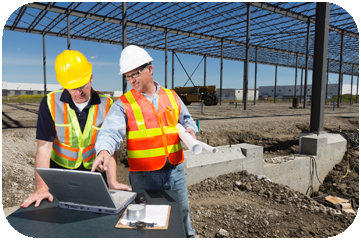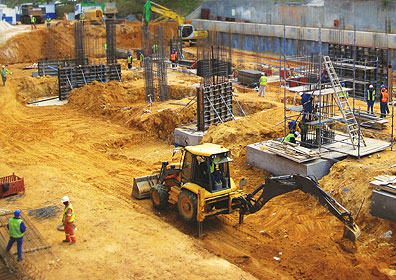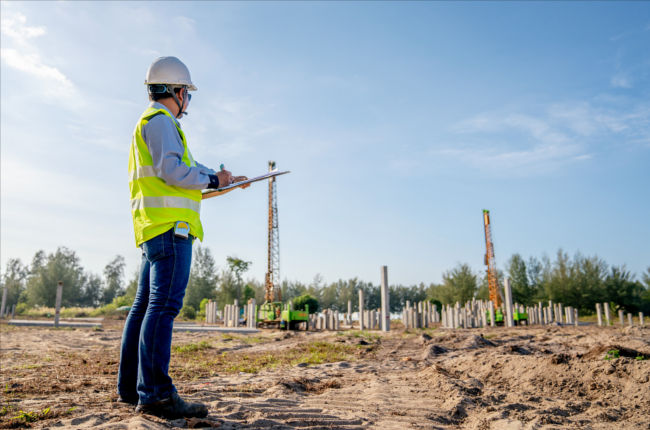Specialized Geotechnical Works for Sustainable Building And Construction Solutions
Specialized Geotechnical Works for Sustainable Building And Construction Solutions
Blog Article
Exploring the Vital Function of Consulting Engineers in Geotechnical Projects: A Detailed Summary of Their Contributions and Responsibilities
Consulting designers function as essential figures within geotechnical projects, entrusted with the complex obligations of examining subsurface conditions and ensuring the architectural stability of constructions. Their knowledge not just forms design criteria and regulative compliance yet likewise facilitates essential interaction amongst various stakeholders, therefore improving task results. The intricacy of their function is further highlighted by the need for positive risk monitoring methods and ecological considerations. As we check out the multifaceted payments of seeking advice from designers, it ends up being noticeable that their involvement is necessary to navigating the difficulties intrinsic in geotechnical endeavors. What certain approaches do these experts use to protect job success?
Introduction of Geotechnical Engineering
Geotechnical engineering is a critical discipline within civil engineering that focuses on the habits of earth products and their communication with frameworks. This area incorporates the research of dirt, rock, groundwater, and the mechanics governing their residential or commercial properties and actions. Geotechnical engineers examine the physical and chemical buildings of these products to establish their viability for different construction tasks, making sure that frameworks are started on steady and reputable ground.

In addition, geotechnical engineers have to consider ecological factors, such as dirt contamination and groundwater management, to promote sustainable growth. Their know-how is vital in enhancing the layout and building procedures, ultimately adding to the durability and safety and security of civil engineering jobs.
Secret Duties of Consulting Engineers

In addition, they are accountable for developing design parameters and specifications that comply with governing requirements and best practices. This includes examining website problems and determining suitable building and construction techniques, which is critical for minimizing dangers associated with ground instability.
Consulting designers also function as intermediaries between various stakeholders, consisting of clients, contractors, and regulative bodies, assisting in clear communication and partnership throughout the task lifecycle. consulting civil engineering companies. Furthermore, they offer skilled advice throughout building, ensuring that geotechnical elements are adequately attended to which any type of unpredicted obstacles are taken care of effectively. Ultimately, the complex responsibilities of speaking with engineers are basic to the stability and success of geotechnical jobs, influencing both security and sustainability in building practices
Website Analyses and Investigations
A thorough website assessment is necessary for understanding the subsurface problems that influence geotechnical projects. Consulting designers play a critical role in performing these assessments to guarantee the safety and practicality of building and construction activities. This process normally entails a collection of investigations, consisting of dirt sampling, borehole exploration, and geophysical surveys, to gather vital data on dirt residential or commercial properties, groundwater levels, and the geological context of the site.
Engineers evaluate the gotten data to recognize the possible obstacles positioned by the subsurface conditions, such as dirt instability useful reference or high groundwater levels, which can impact the design and implementation of the project. In addition, site evaluations help in evaluating the presence of pollutants, which is essential for ecological conformity and making sure public safety.
Furthermore, seeking advice from designers collaborate with multidisciplinary groups to integrate searchings for from site investigations into wider job goals. Via strenuous paperwork and coverage, they give vital insights that educate stakeholders about the viability of the website for suggested advancements. Eventually, the thoroughness of site assessments lays the foundation for reliable planning and design options, mitigating threats related to unforeseen subsurface conditions.
Style and Danger Management
After carrying out extensive site evaluations, speaking with engineers concentrate on the style and risk administration elements of geotechnical projects. This phase is important as it makes certain that the engineered options are not just efficient yet also risk-free and lasting (consulting civil engineering companies). Designers use their competence to create layouts that address the specific geotechnical conditions identified throughout the website analyses, including soil buildings, groundwater actions, and potential hazards
Danger right here administration is important to this process, as it involves recognizing, analyzing, and mitigating possible risks related to the job. Designers employ different logical methods and modeling strategies to forecast the habits of dirt and rock under different loading conditions. By assessing unpredictabilities and prospective failure settings, they can propose layout alterations that enhance security and decrease threat.
Furthermore, speaking with designers make certain compliance with appropriate codes and standards, which are important for reducing responsibilities. They likewise prepare contingency plans to deal with unexpected difficulties that might develop throughout building. Through careful design and proactive threat monitoring, getting in touch with designers play an essential role in guaranteeing the security, functionality, and longevity of geotechnical projects, ultimately adding to the overall success of the building undertaking.
Cooperation With Task Stakeholders
Effective collaboration with project stakeholders is crucial for the success of geotechnical projects. Consulting designers play an essential role in promoting interaction among various parties, including clients, specialists, governing authorities, and environmental specialists. This collaboration ensures that all stakeholders have a clear understanding of task objectives, timelines, and prospective dangers.
Consulting engineers are in charge of integrating stakeholder input into the layout and execution of geotechnical remedies - consulting civil engineering companies. By actively involving with stakeholders, they can identify concerns early in the job lifecycle, enabling timely changes and mitigating potential conflicts. This positive method not only cultivates trust but additionally improves task performance
Moreover, consulting designers need to navigate the intricacies of governing compliance, making certain that all geotechnical techniques line up you can try these out with legal and ecological criteria. Their knowledge around is essential in preserving open lines of communication with regulative bodies, thus promoting smoother authorizations and permitting procedures.
Verdict

Report this page